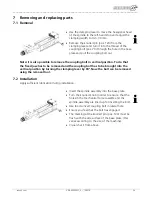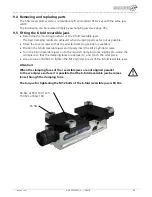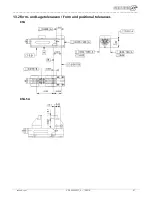
_________________________________________________________________________________________
schunk.com
XND.00005.022_A – 10/2018
44
11.6
Risks of hydraulic system
Hydraulic systems operate at high pressures. Do not attempt any manipulation when the
system is under pressure!
Risk of fingers being caught during clamping
Hydraulic vices pose a risk of trapping!
Safe operation can only be guaranteed when the clamping width has been correctly set.
Set the clamping range such that the distance between the jaws is approx. 1 – 2 mm larger
than the workpiece; this means that the gap is so small that fingers cannot be trapped.
Do not operate the vice with a gap between the workpiece and the jaws on either side that
is large enough for fingers to be trapped in order to avoid accidents when the vice clamps
the workpiece.
Choose a width between jaws that is clearly larger or clearly smaller.
When producing purpose-made jaws or when using aluminium jaws, it is important to avoid
ridges that could present a trapping risk.
Maintaining pressure during operation
It is possible that hydraulic cylinders have small leaks. During milling work, the clamping
device must be continuously supplied with hydraulic pressure from the hydraulic system
in order to ensure that there is no loss of pressure due to leakage.
Hydraulic hoses must be protected against hot fragments; hoses must be regularly
checked for wear.
Important:
If the hydraulic sustem loses pressure or a hose is damaged, the clamping force reduces
sharply. In order to achieve improved safety, we recommend that a switched non-return
valve is fitted immediately before the clamping device.
Check the vice regularly for leakage.
12
Taking out of service
The clamping device and all accessories can be disposed of as scrap metal without any risk.





































